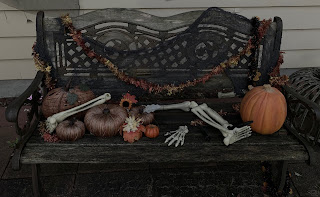Time to Bloom
After a long and bizarre winter, spring is finally here (well, apart from a few dropping temps and one very unwelcome snow forecast that just needs to go away). For many people, this means one thing-time to get the garden ready.
I have never been a huge gardener, much to my green thumbed-mother's chagrin. While she happily spends hours outside planting and tending her flowers and vegetables (not to mention what amounts to an indoor garden throughout her home), I just never got the hang of it. I've decided that needs to change.
If you are a Master Gardener (yes, that is an official designation), this may not be the post for you. I will be going over some tips and advice for a beginner to start their own garden-whether it's in your yard, patio, or even your window sill.
First, you want to make sure that you have the correct soil. More than likely, if you take a handful of soil and find a few worms in there, you'll be good. Otherwise, you can also take it for testing. Terrible soil in your yard? No worries, you can always buy soil to use!
What are you wanting to grow? Veggies or flowers? Or both? If having fresh vegetables is appealing to you, some easy ones to grow are cucumbers, tomatoes, beets, kale, and root vegetables. With flowers, decide if you want annuals (bloom once, but last most of the season) or perennials (bloom each year, but only lasts about 2 to 3 weeks). You can certainly do both, but for future years, remember where your perennials were planted so you don't accidentally dig them up while planting more annuals! A few easy ones? For annuals, try sunflowers, zinnias, marigolds, and morning glories. Some perennials would include peonies, black-eyed Susans, daffodils, and aster.
As you plant, don't forget to mark what you planted-this can prevent some head-scratching when you're waiting for the blooms. As for spacing, pay attention to the directions included with the seeds, as it's common for beginners to plant too close together. You can look up some ideas on "companion planting" to see if you have some plants that would grow better together.
Okay, you've tested, chosen, and planted. What now? Remember to keep caring for your plant babies! Water when recommended, weed regularly, and be on the lookout for nighttime frosts, which can still happen this time of year. If a frost is forecast, make sure to cover that garden-just find an old sheet or light blanket, and you're set.
Enjoy the fruits of your labors! Fresh produce and colorful flowers are some of the best parts of spring and summer in Iowa!

Comments
Post a Comment